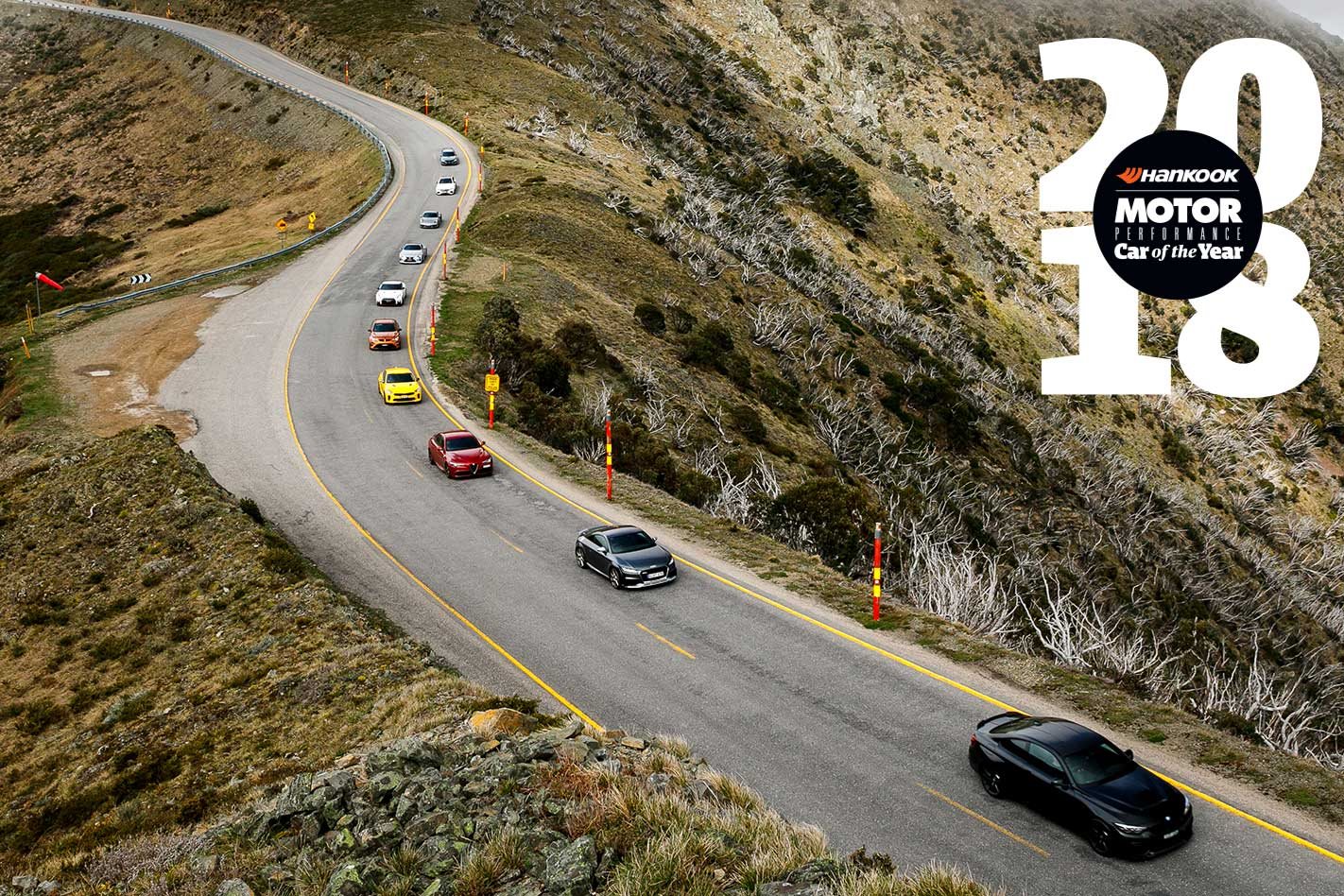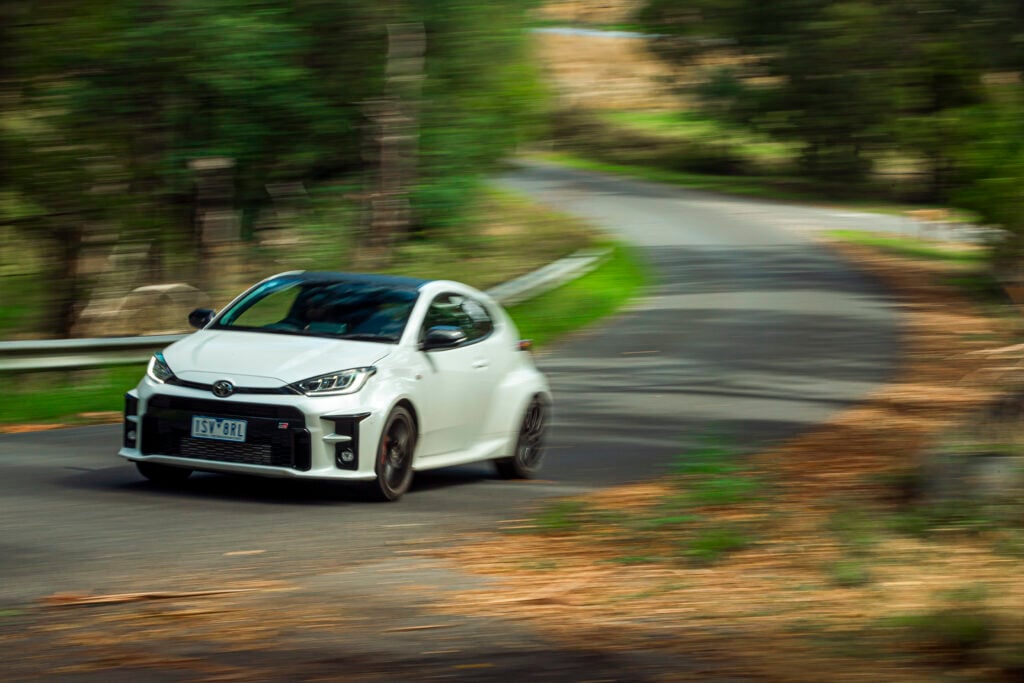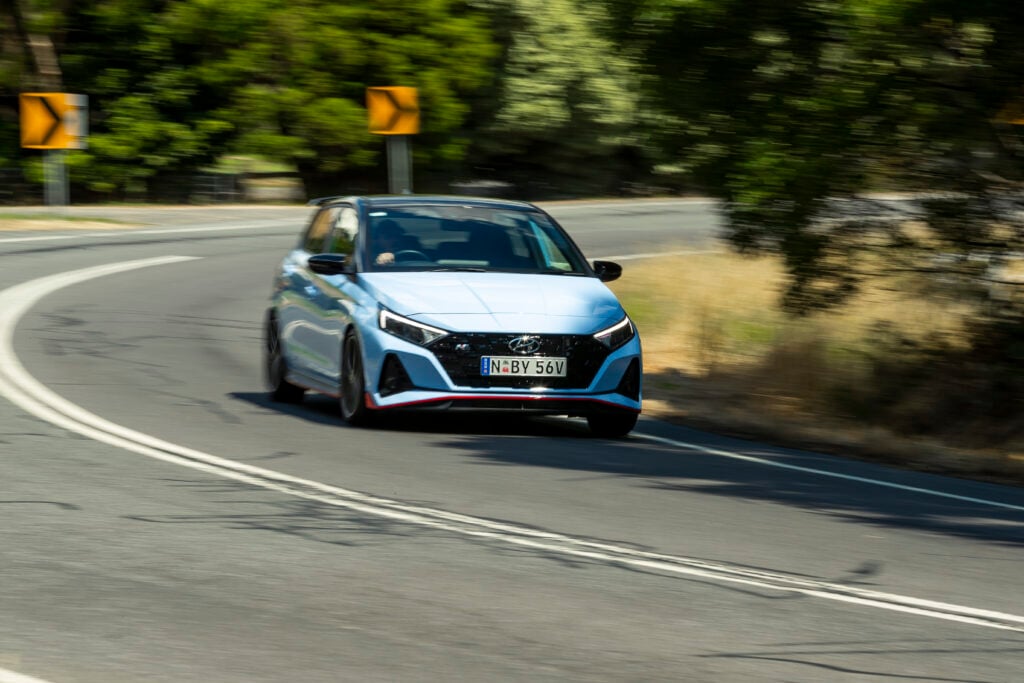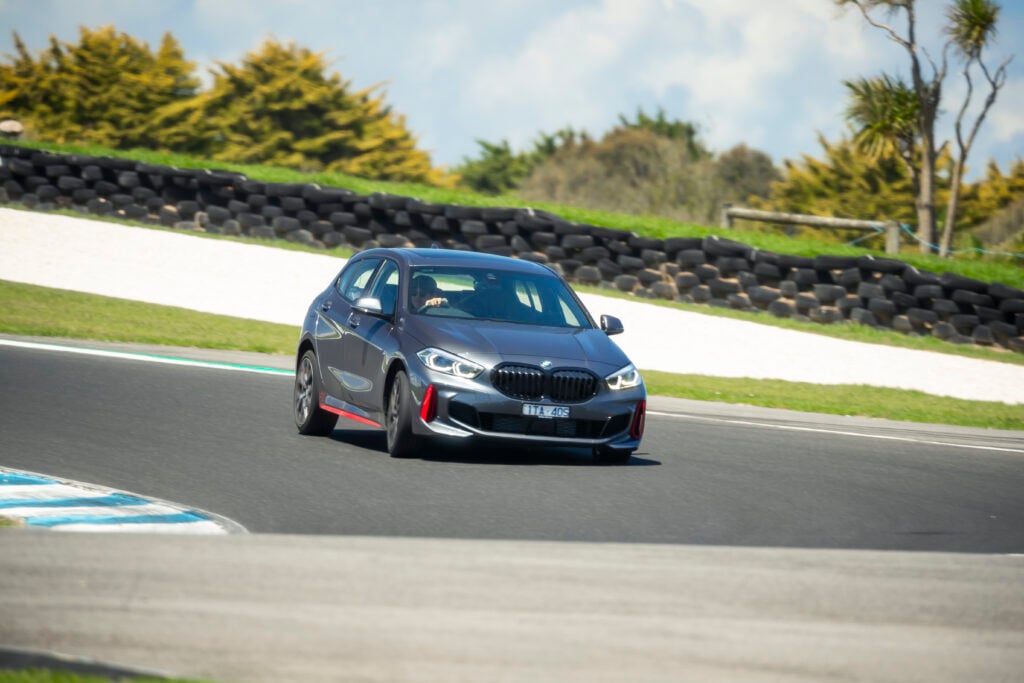As our $1.8m train snakes its way to our intended base at the Tawonga Gap lookout, the rain drops land with increasing frequency and the mist thickens as we climb until it seems as though we’ve ascended into the clouds.
The lookout itself offers a stunning view if complete white-outs are your thing, so best to turn 180 degrees and examine the more stirring sight of 10 of the year’s best performance cars ready to be put to the test on one of Victoria’s finest roads.
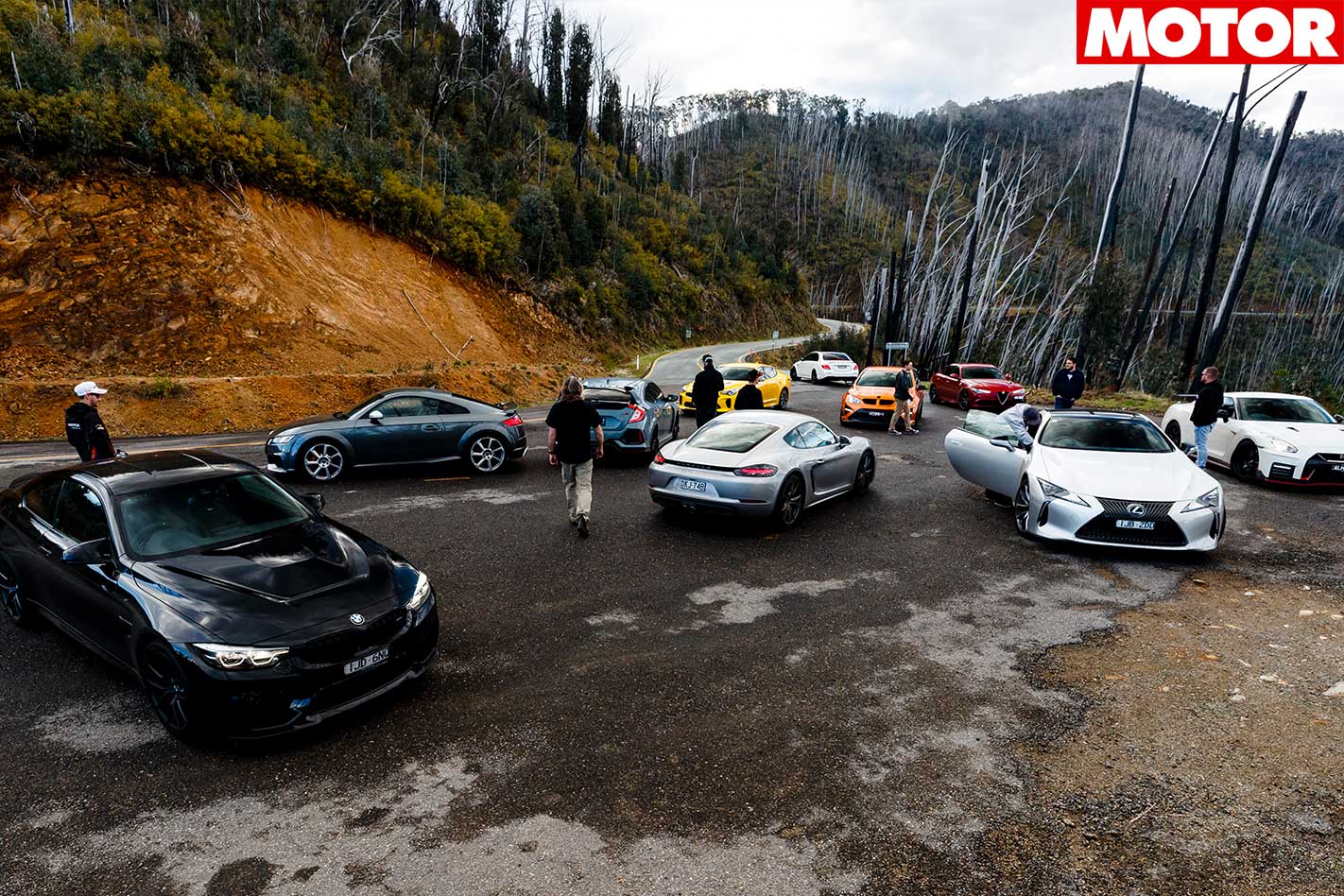
Adding to the challenge is the wet surface, though the rain has stopped and the cloud is dissipating, affording the odd glimpse of the stunning outlook over the Kiewa Valley and Mount Hotham.
In slippery conditions it seems prudent to start in something with four driven wheels, though given the slowest of our all-paw trio hit 100km/h in 3.59sec, that decision doesn’t reduce trepidation as much as it might. As such, the 450kW/850Nm Mercedes-AMG E63 S seems as sensible a place to begin as any, a decision validated by the incredible wet weather grip of its new-generation Michelin Pilot Sport 4S tyres.

The speed the E63 is capable of is so immense that even a casual sighting run is enough to upset the sensitive stomach of videographer JP, who thankfully exits before redecorating the AMG’s sumptuous interior. Despite its confidence-inspiring demeanour, using the Merc’s entire performance envelope is impossible as it’s not the conditions that prove constraining, but the physical dimensions of the road.
It accelerates so rapidly that by the time you’ve approached full throttle the next corner has arrived. The 4.0-litre twin-turbo V8 is a monster; in its angriest modes it feels so sharp and sounds so aggressive – though the note is a little manufactured – that it makes the similar engine in the C63 seems almost tame. The steering is well-weighted and linear, the brakes impervious and the new nine-speed gearbox a clear improvement over the old seven-speeder.
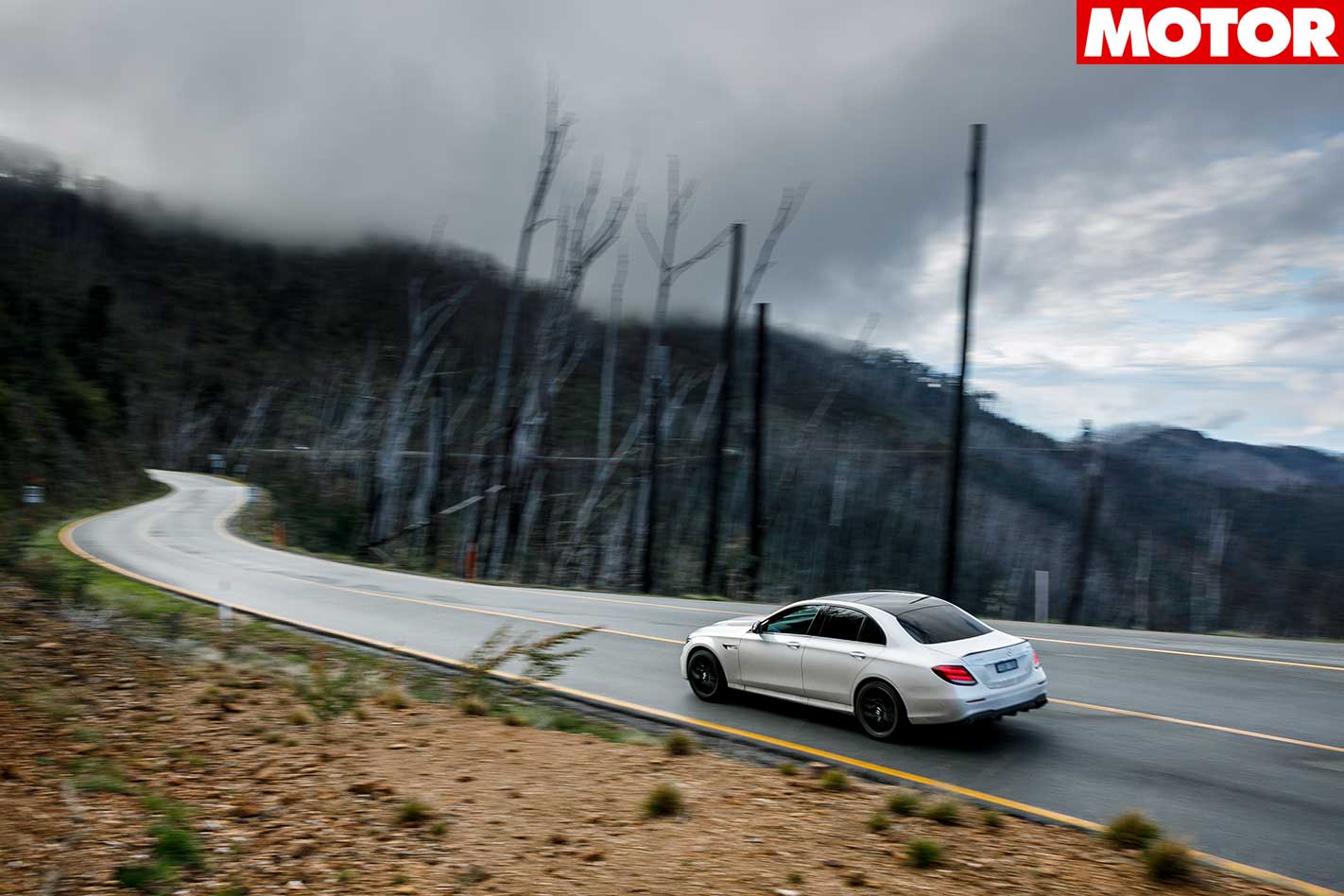
The bigger issue for a number of judges is whether the AMG possesses the refinement expected of a $260K premium sedan. As DC puts it, the E63 always feels “on”. Its performance is staggering, but the ride is firm and road markers thud through the structure often enough for questions to be raised.
Still, a blast in the GT-R Nismo puts refinement in perspective. In an earlier comparison against the BMW M4 GTS we praised the Nismo for its relative comfort, but among more ‘normal’ vehicles the Nissan’s track focus is obvious. On the road, selecting Comfort for the dampers is as much a part of the start-up process as turning the engine on.

The road is drying, but still damp – conditions that, contrary to internet opinion, would tie a regular GT-R in knots. Its Dunlop rubber enjoys water as much as your average household cat, but for reasons that can only be guessed at – softer compound, perhaps? – the Nismo’s R-spec Dunlops find plenty of purchase.
Light steering and an elevated driving position make it difficult to get an accurate read on the road, yet the GT-R’s outright grip levels are such that you’re unlikely to be close to its limits.
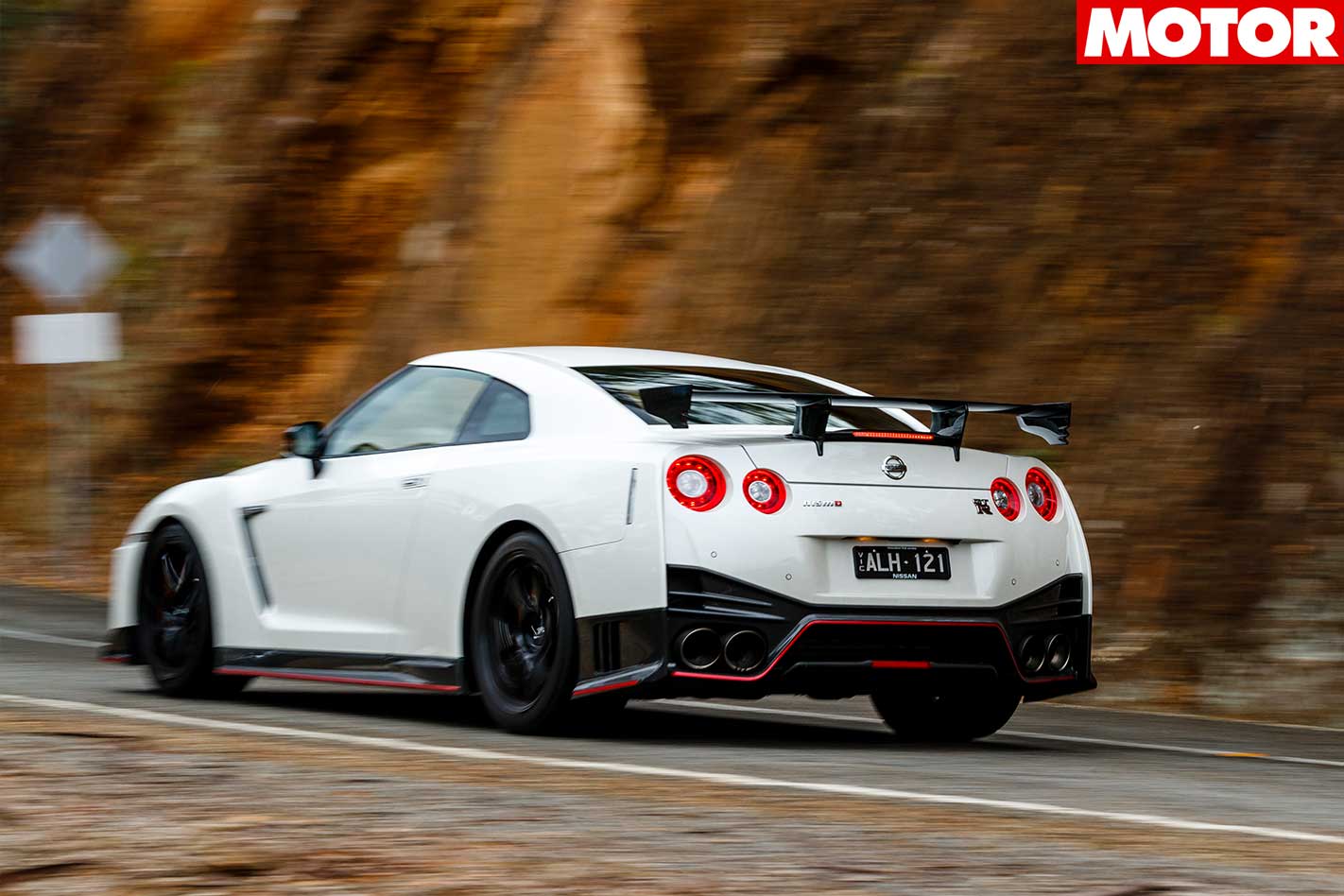
The similarly focused HSV GTSR W1 straddles the line between road and track more comfortably. Those trick SupaShock dampers are undoubtedly firm – too firm for Morley and Robbo – and the exhaust drone can be distracting, yet both issues are mainly a problem for rear-seat occupants. The driver is better isolated and likely to be having too much fun to care.
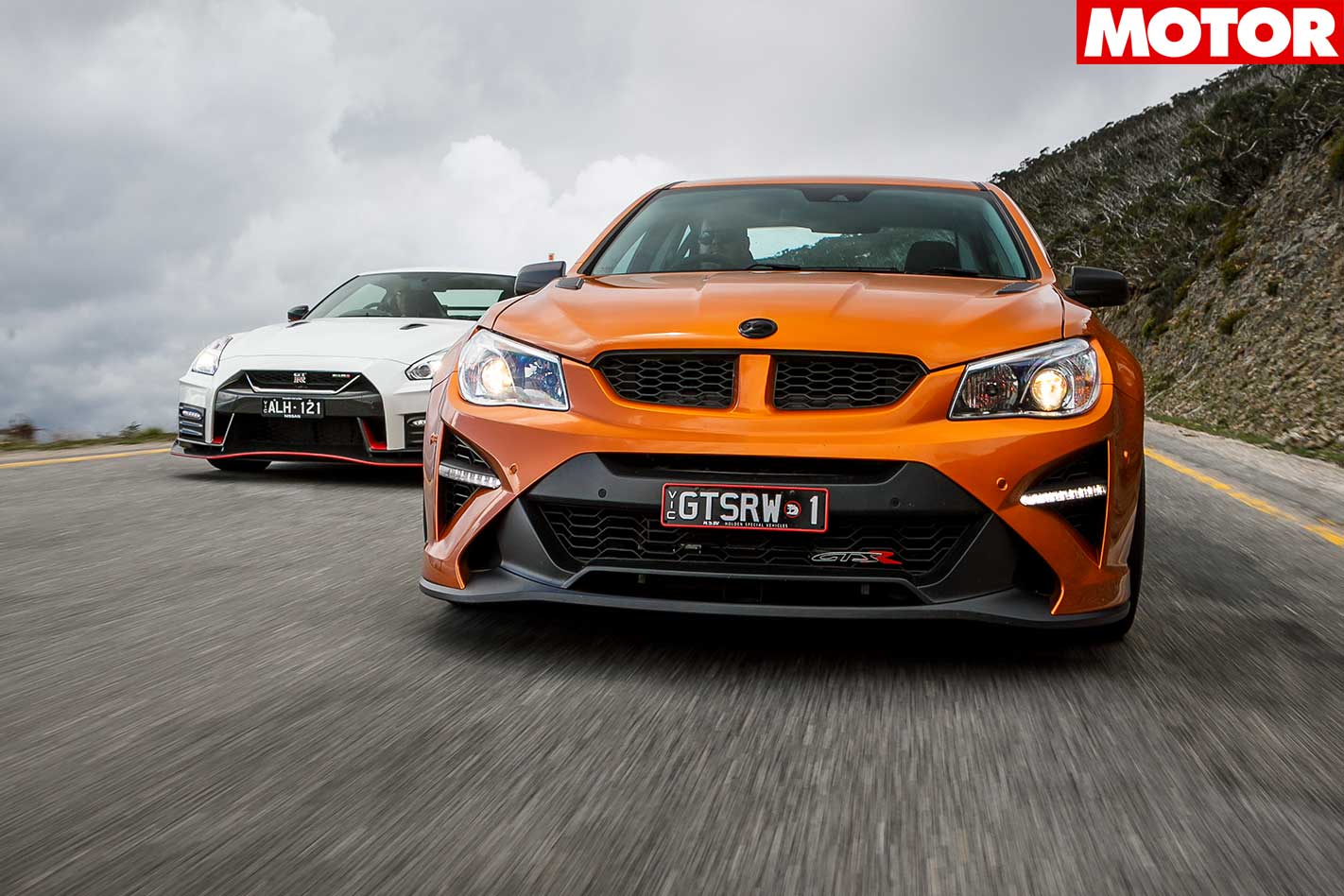
Those trick Trofeo R tyres aren’t the liability you might expect on damp roads – though we wouldn’t like to hit standing water – and in the dry they grasp the tarmac like they’re acutely aware of the value and rarity of the car they’re supporting.
The main barrier to exploiting the W1 on the road is its gearing. When first stretches to 97km/h and second to 145km/h, cog-swapping opportunities are rare, HSV’s hottest offering being virtually direct-drive on our test route – simply leave it in second.
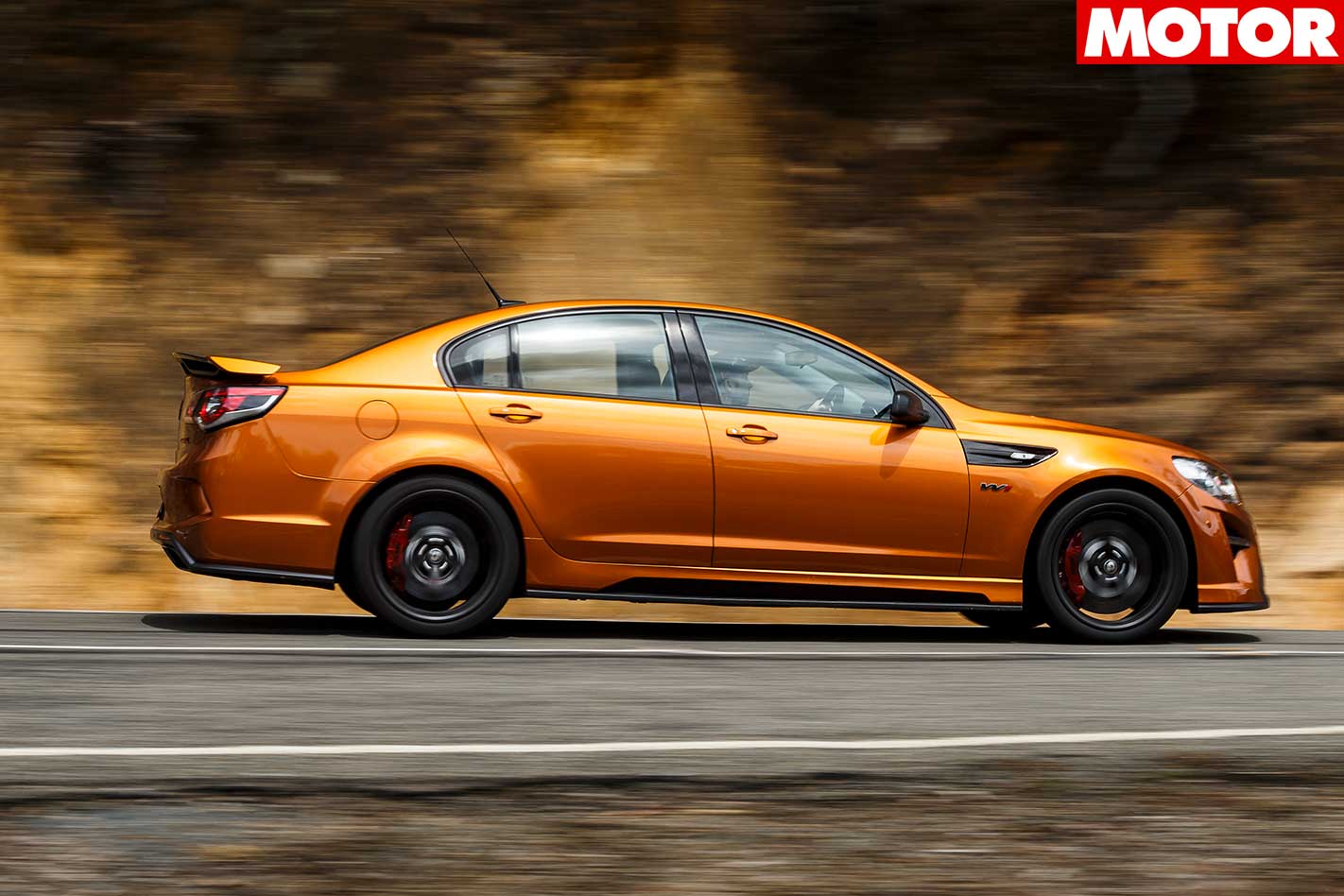
Arguably the best W1 experience, though, is waiting at the lookout and hearing the thunderous LS9 bellow through the trees like a dragon from Game of Thrones.
Like the W1 and Nismo, we suspected the BMW M4 CS would also be happiest at Winton – more fool us. Its beefed up stance, subtle carbon aero, weight loss, extra power and sticky Michelin Cup2 rubber all scream ‘take me to a track day’, but on-road this butch Beemer blows us away.
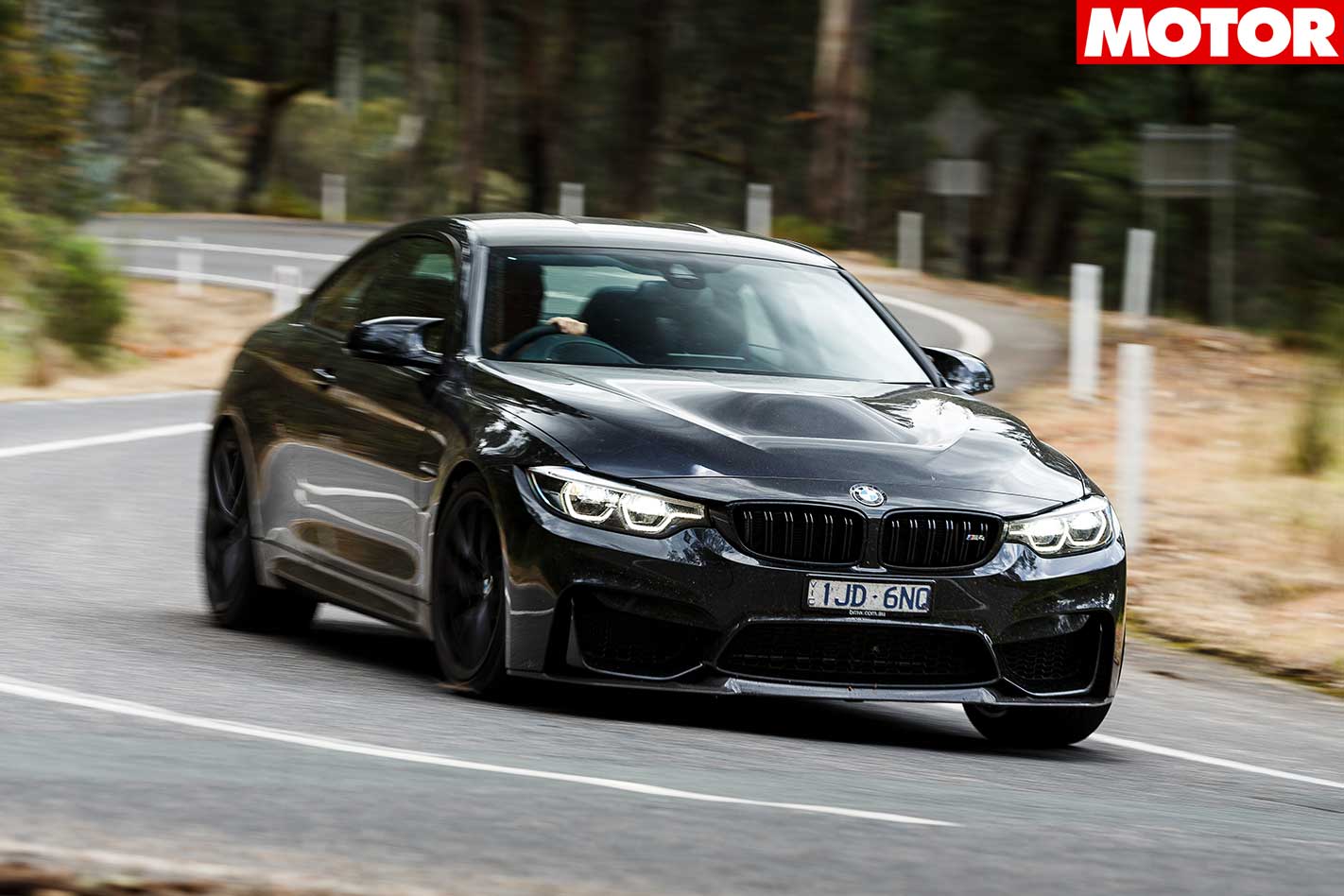
The improvement is such, though, that the changes feel to go deeper than merely a change of rubber. There’s better control over nasty mid-corner bumps, the MDM stability control setting is more refined and the engine angrier and more vocal.
Whereas the standard M4 would be hopping over bumps with spikes of oversteer, the CS more often than not grips and goes, yet if you really dig in it still loves a cheeky hint of oversteer on corner exit.
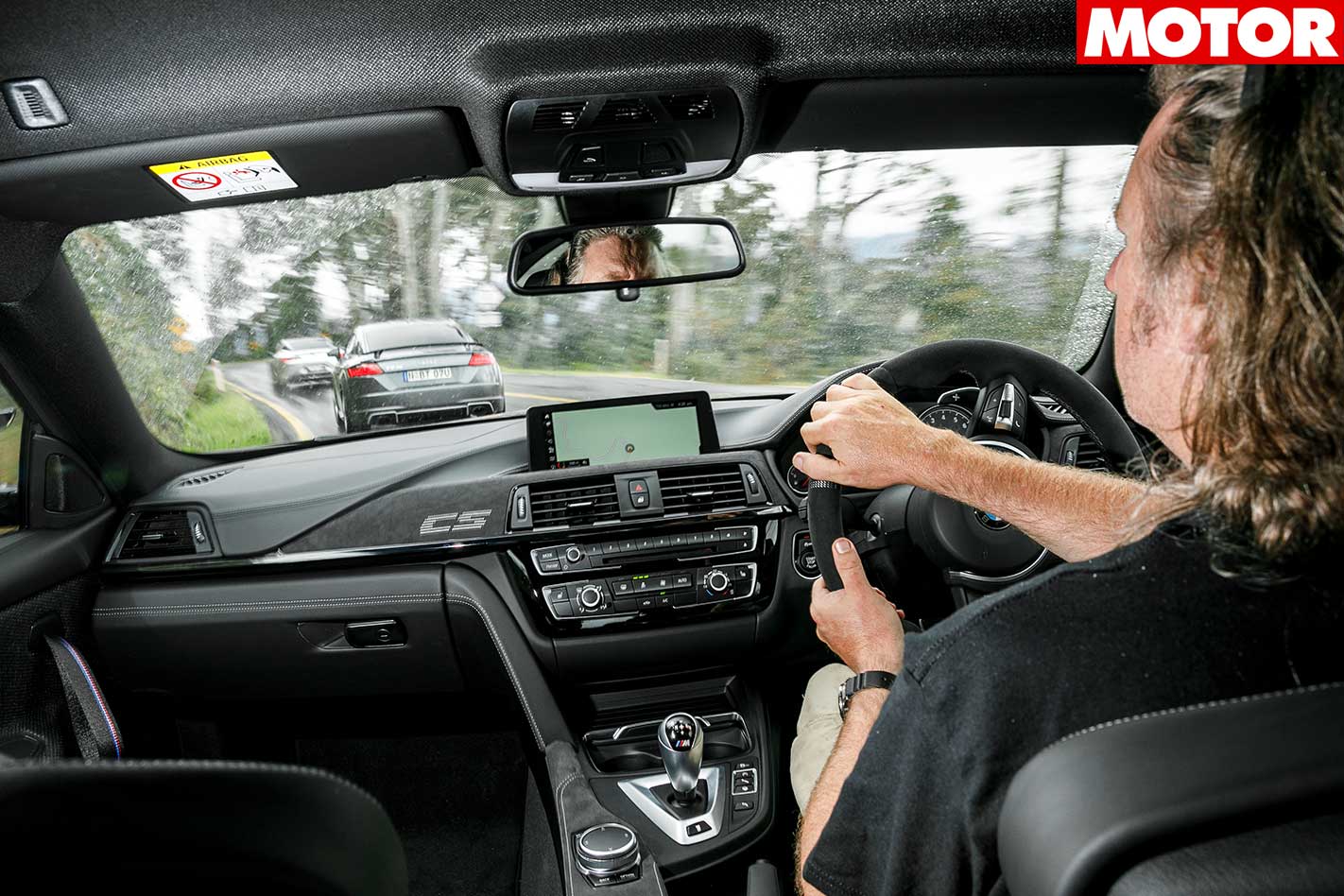
Sadly, the same can’t be said for the Lexus LC500. It looks fantastic, inside and out, and you could make a case that it’s the best sounding car here, but sadly the substance doesn’t match the style. That’s a tad harsh, as in many ways the LC500 is Lexus’s most polished performance product yet.

Unfortunately, as soon as you turn the wheel that weight starts to hurt the LC500. It doesn’t offer a whole lot of feedback and feels too soft to effectively control its weight, yet skitters over bumps, putting the overly sensitive ESP system on high-alert.
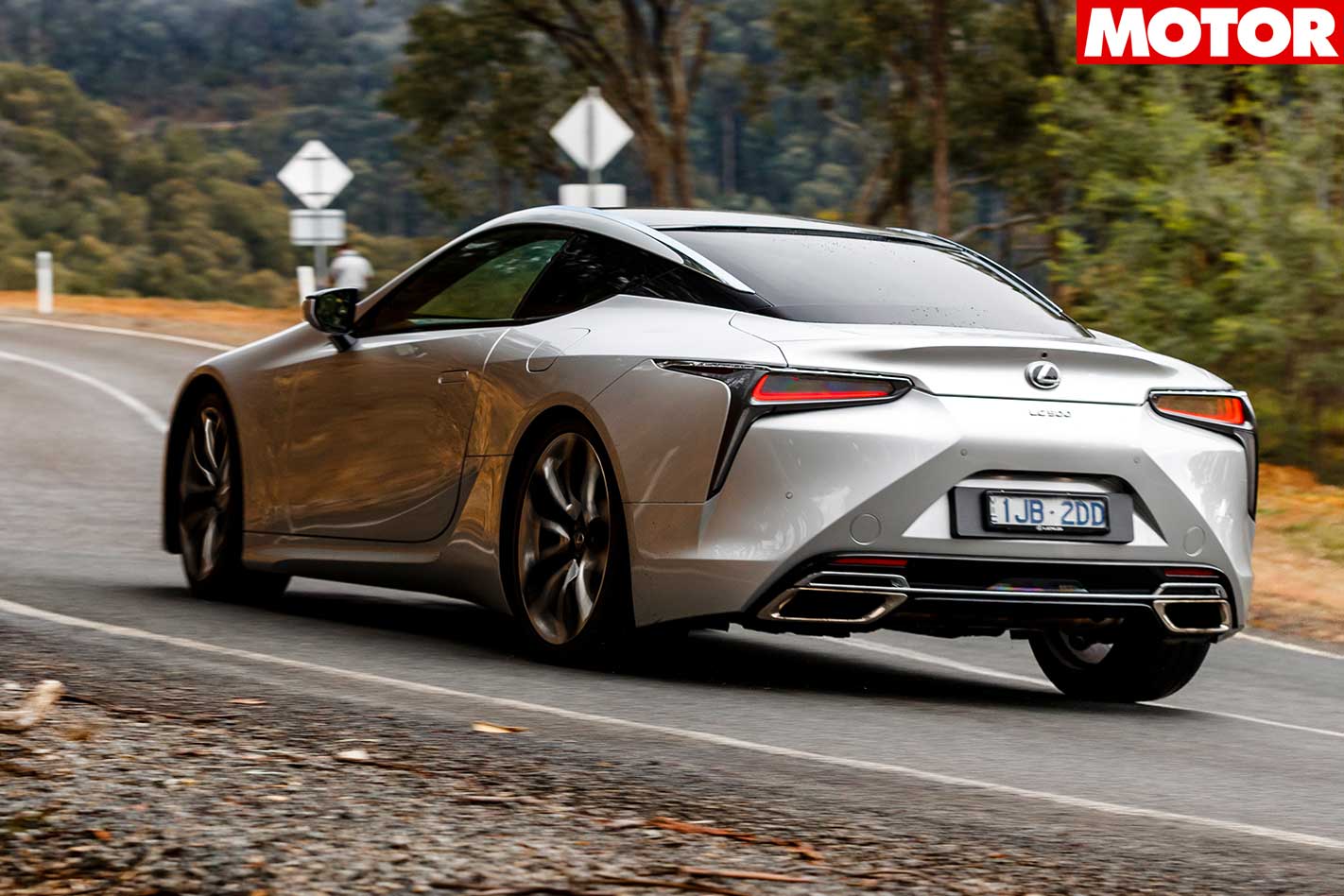
Despite its grand tourer brief, the ride is also jittery to the point of annoyance and the infotainment system seems deliberately unintuitive. Despite this, the LC500 remains an easy car to fall for, if you like the way it looks, that is.
Another car that divided the judges on its aesthetics was the Kia Stinger.
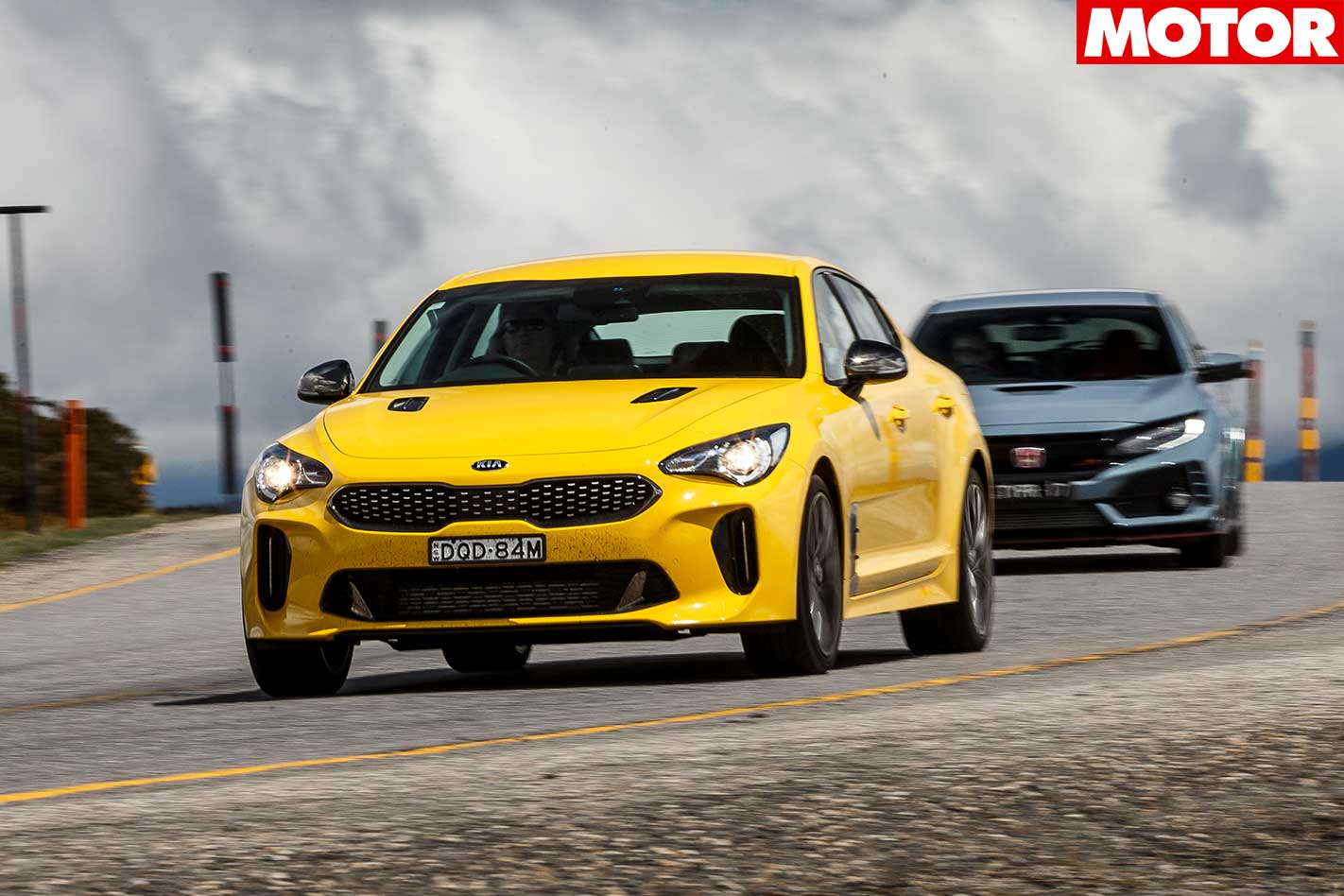
The kindest way to describe the Stinger’s chassis is ‘unfinished’. If you’re intending on buying Kia’s new rear-drive sports sedan as a day-to-day cruiser, it’s likely you’ll have no complaints, though the way it floats over larger undulations yet fidgets over small amplitude bumps is a little disappointing.
When it comes to driving hard, however, the Stinger is most definitely a work in progress. We’d start with a better tyre. The way they completely fell apart on track suggest the Continental ContiSportContact 5s aren’t suitable for this level of performance, but a more focused tyre would only help mitigate some major handling flaws.

Actually, the almost complete lack of brakes after Winton is currently the Kia’s biggest issue, but inconsistency is a close second.
Contrary to Kia’s claims, the ESP doesn’t deactivate completely, operating more like a very lenient Sports mode. This is fine – welcome, even – except that sometimes the system is overzealous and other times checks out completely; combine this with its oversteer-first handling balance and the Stinger can be an eye-opening ride.
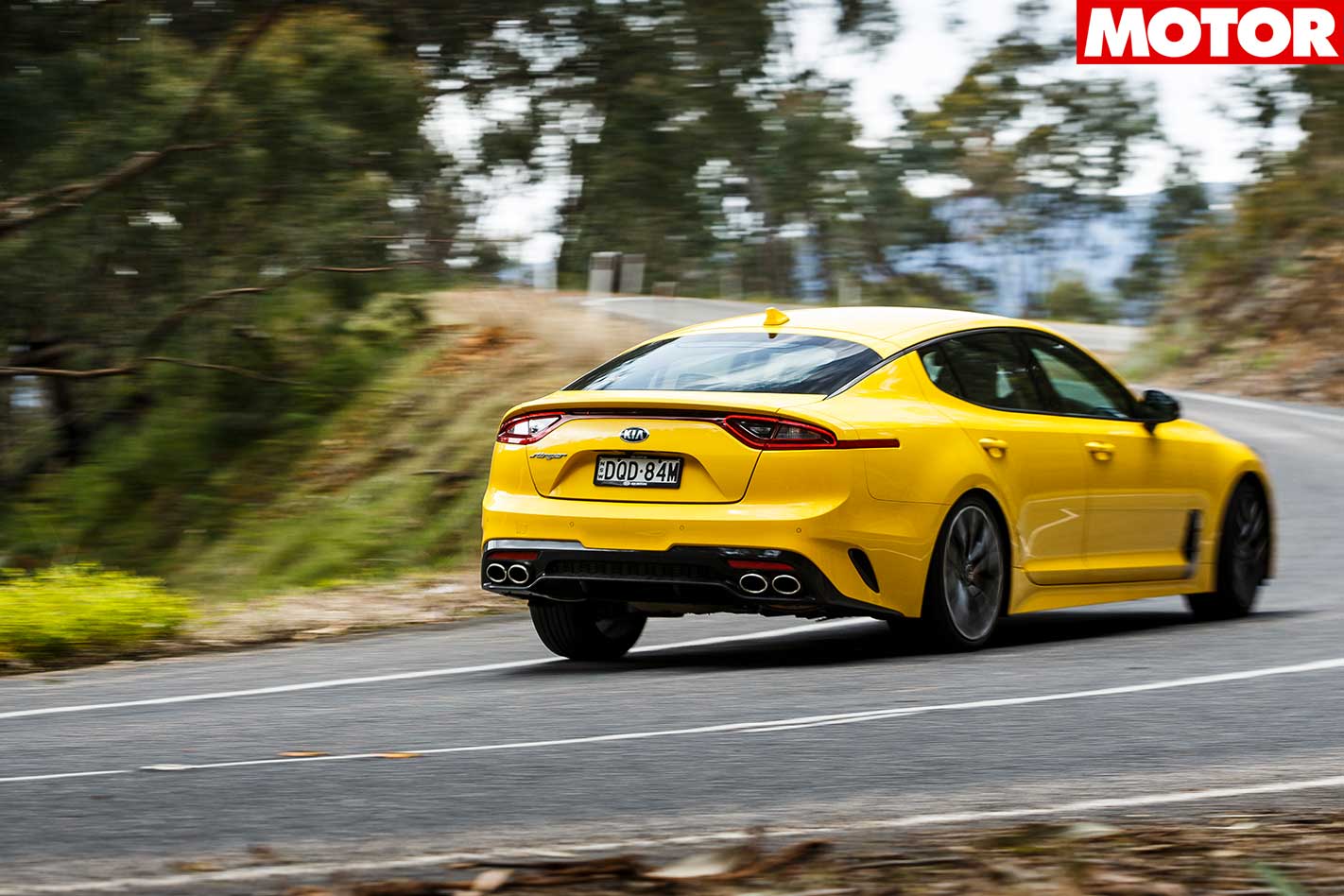
As mentioned, as a sports-luxury cruiser it does a decent job, with heaps of grunt and a great interior, but even at a slower pace the lack of a proper manual mode for the eight-speed auto grates. As a performance car, it needs more tyre, more brakes and more control – maybe the adaptive damper-equipped GT is better?
Virtually identical in mechanical spec to the Kia is the Alfa Romeo Giulia QV, a rear-drive sedan powered by a twin-turbo V6. In contrast to the Stinger, however, the chassis is undoubtedly the highlight of this Italian stallion.
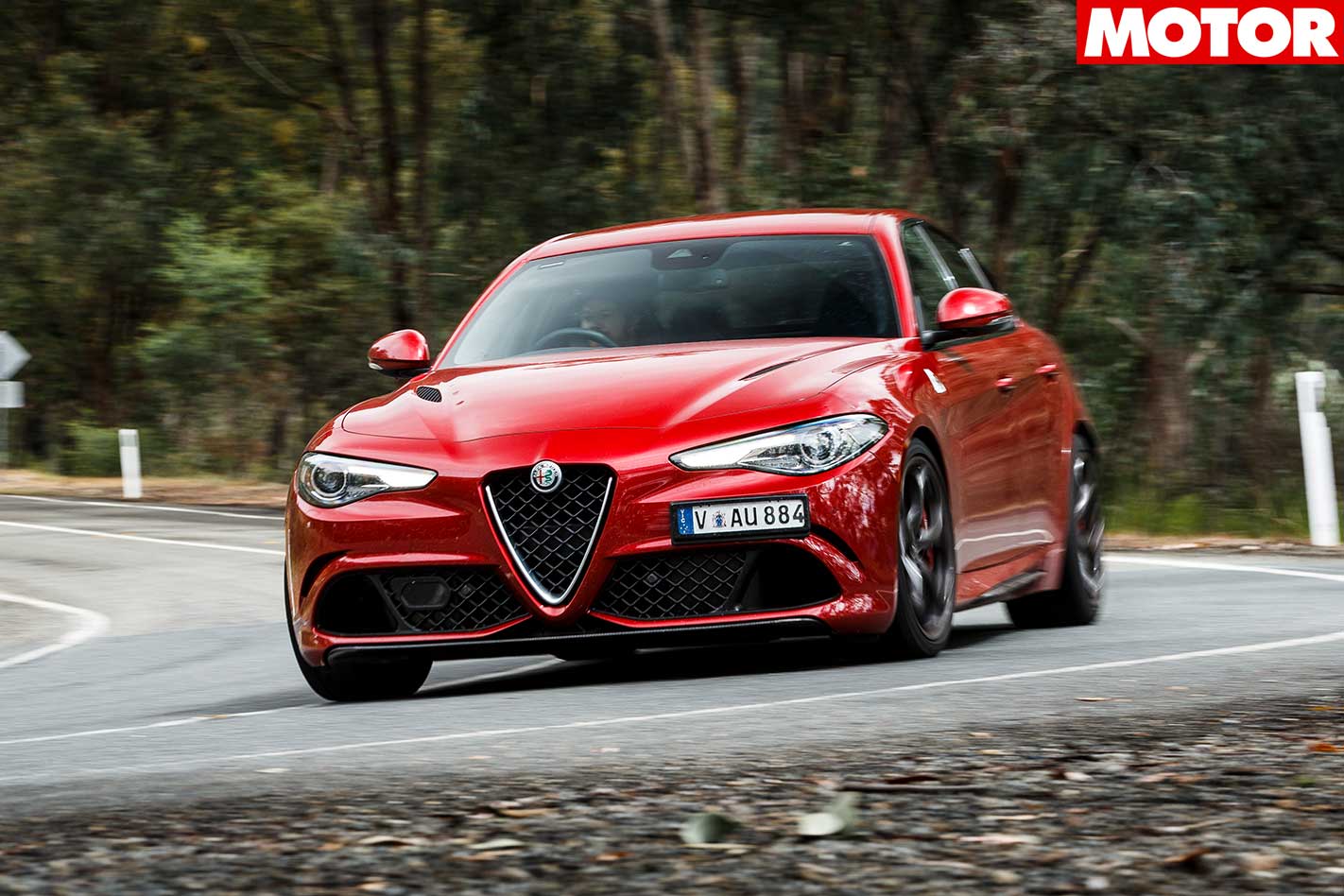
The only way to experience the Alfa’s true talents is in Race mode. This more or less deactivates the ESP completely – a midway mode would be welcome – yet the Giulia QV is so friendly at the limit it seems almost a crime to electronically shackle it.

Combine this with outstanding touring manners – its ride is probably the best on test – and you have an excellent package, more than worthy of the 4.5-star rating we gave it last year. But this is PCOTY and that missing half-star proves crucial.
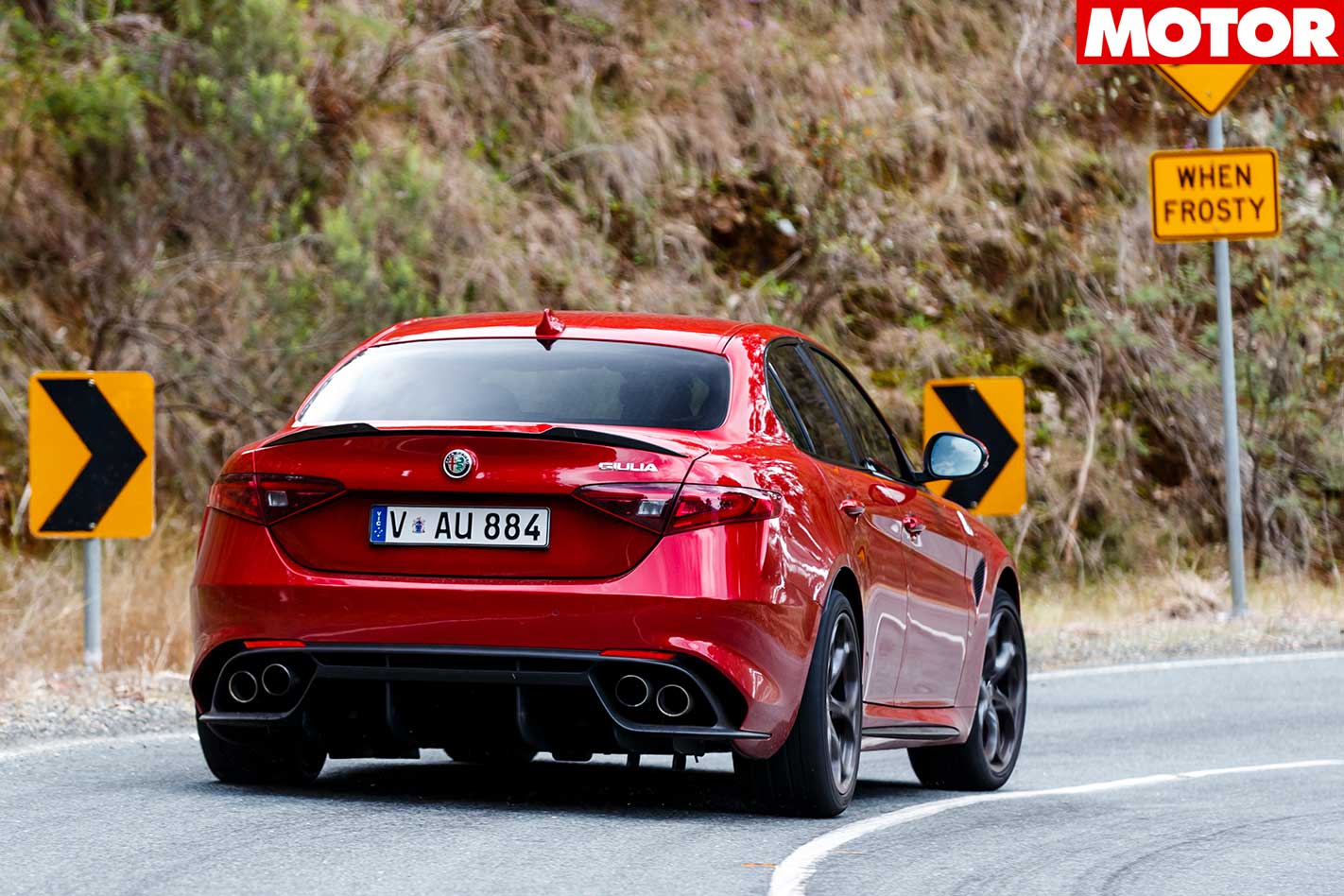
To these ears it also sounds uninspiring, with a flatulent exhaust note and a wheeze-like whine under heavy load emanating from the engine bay.
The experience from behind the wheel of the Audi TT RS couldn’t be more different.
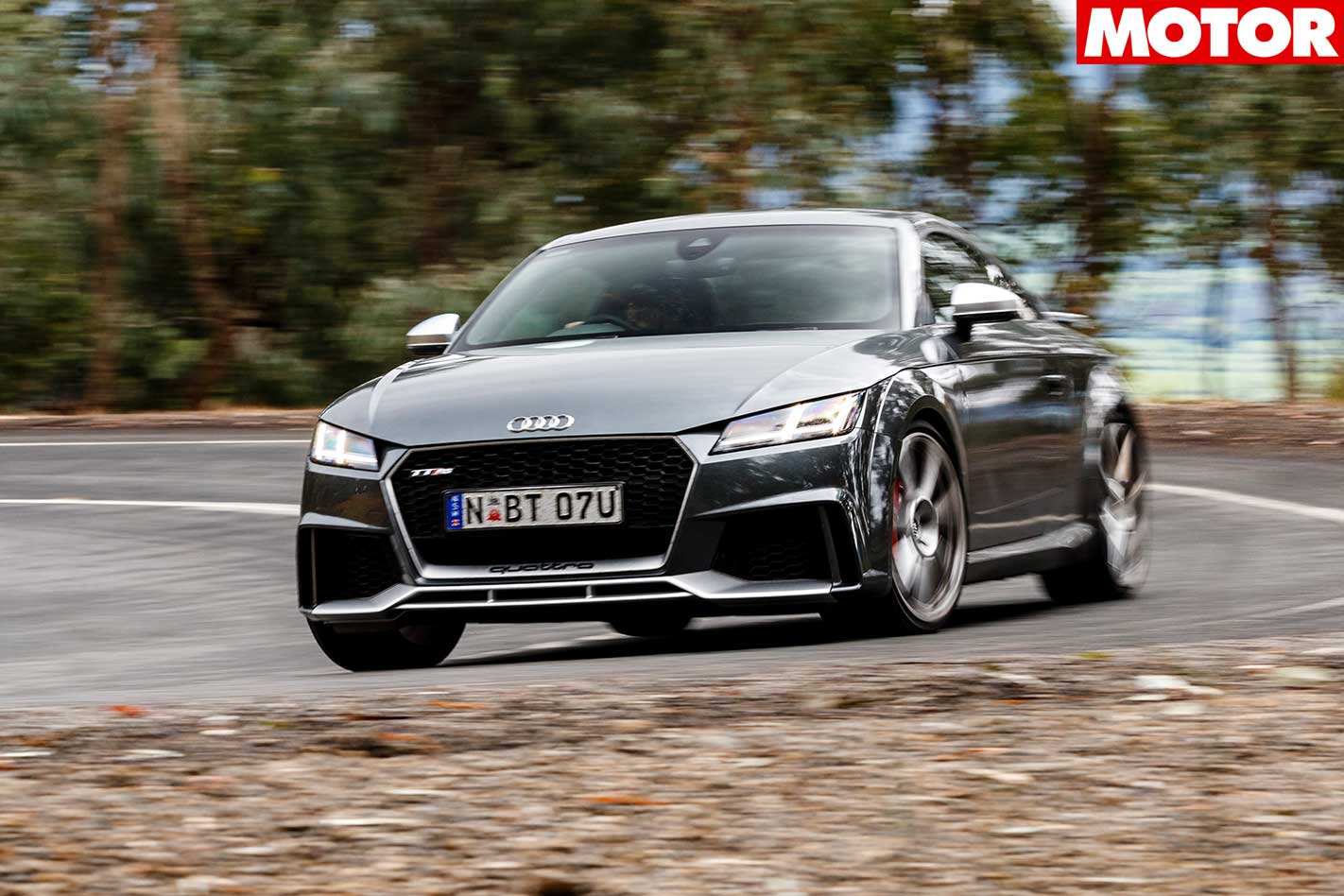
Despite its proficiency in the art of point-and-shoot, the Audi excels in faster corners where there’s enough momentum to get its rear moving slightly, something the Sport ESP setting is more than lenient enough to allow, helping point the front wheels at the corner exit and allowing power to be applied earlier.
However, while the TT RS is no boring, stuck-to-the-ground automaton, of the three all-wheel drives here it’s obviously the only one that’s predominantly front-drive, shuffling power to the rear when required.
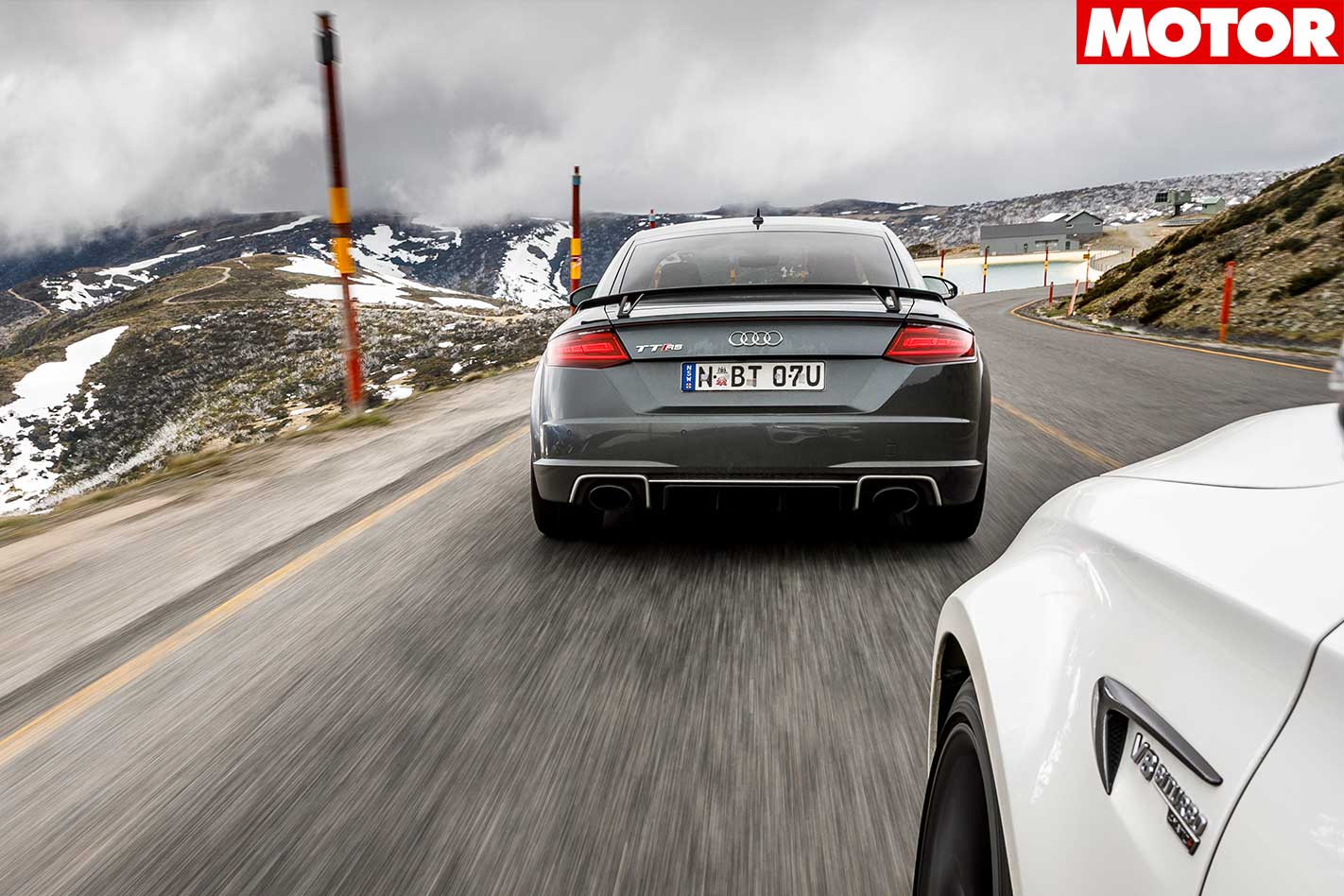
The Audi’s preference is for smooth roads, as bumps encountered under load will have the car skipping, hopping or (occasionally) jumping depending on their severity. Its ride is definitely on the firm side, though thankfully without the wince-inducing crashing of the TT S.

Unfortunately for Ingolstadt, the Porsche 718 Cayman S shows what the Audi is lacking. As a driving tool it’s virtually perfect.
Like the Audi it can get flustered over bumps but doesn’t lose its composure to the same degree and otherwise it’s difficult to imagine what more you could want from a car dynamically. The steering is spot-on, brakes powerful and easily modulated and grip levels immense, yet while it doesn’t move around in the manner of the M4 or Giulia, it still always manages to feel alive.

The 2.5-litre turbo flat-four will never make your ears tingle like the old sixes, but it sounds okay from inside and anyone used to 981-or-previous Caymans will be shocked at the new car’s speed – I certainly was when I encountered it coming the other way on the exit of a tight bend with a certain Bathurst champion at the helm.
The 718 Cayman is now a very expensive car – more than $170K as tested without carbon-ceramic brakes – yet somehow it still feels good value, simply because it could easily be used every day while being so polished that, in engineering terms, it’s almost faultless.
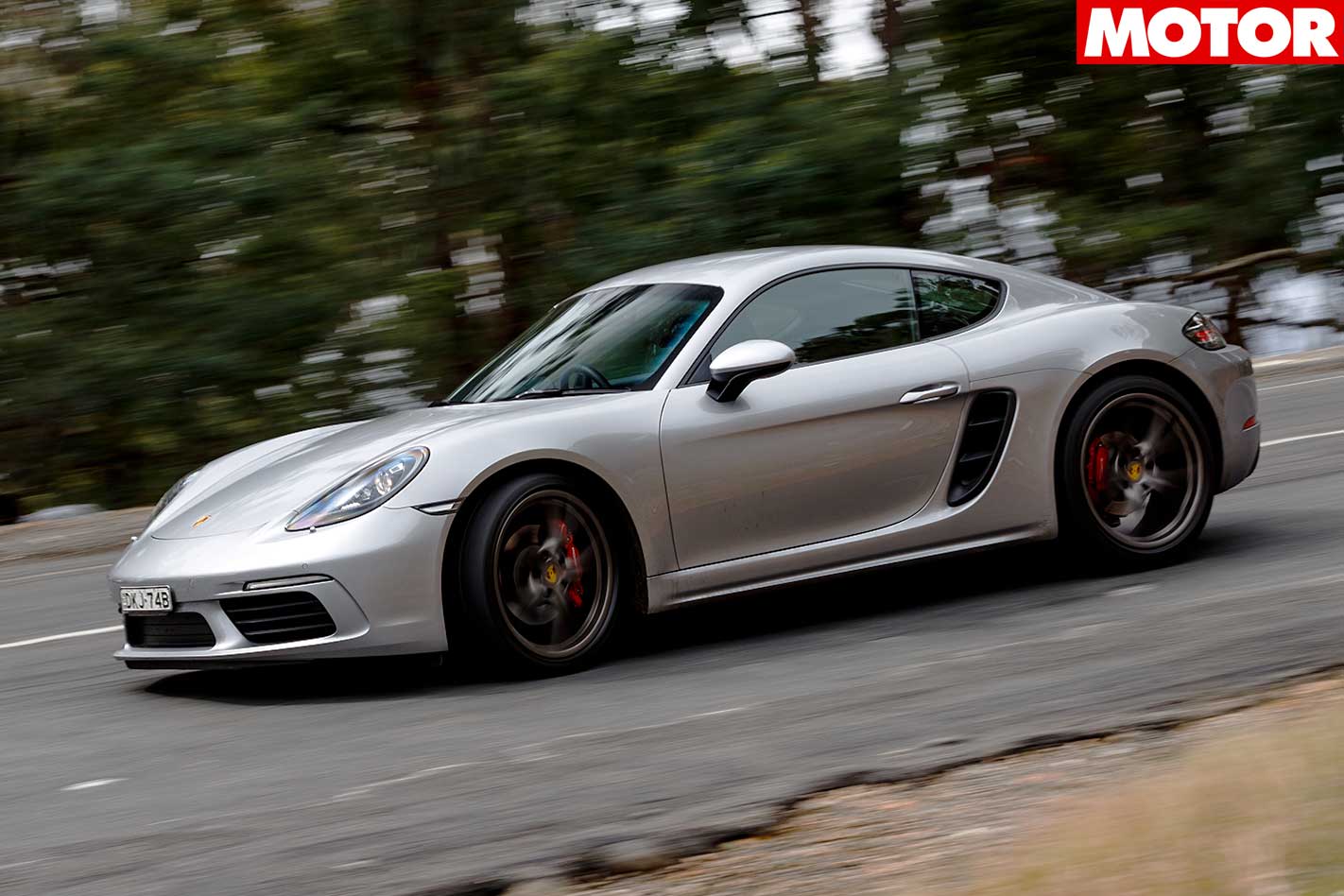
As a precision driving instrument, though, it sets the benchmark, which only makes it more remarkable that as I shut off the Civic Type R’s 2.0-litre turbo four my foremost thought is: “I think this is the best car I’ve driven today.”
Every superlative just used to describe the $170,000 Porsche applies equally to this $50,000 Honda, yet it’s remarkably difficult to explain why this hot hatch is so good.

Adding a turbo means the VTEC engine majors on mid-range torque rather than screaming rpm, but it’s beautifully responsive, revs hard and keeping it in the sweet spot is a cinch thanks to the closely stacked ratios of the sweet-shifting six-speed manual.
Quick, accurate steering controls a front-end that is absolutely nailed to the road, the stable rear ensuring quick corner entries and the tricky limited-slip diff allowing all 228kW/400Nm to claw at the road on exit, with occasional torque steer on bumpy surfaces the only price to pay.
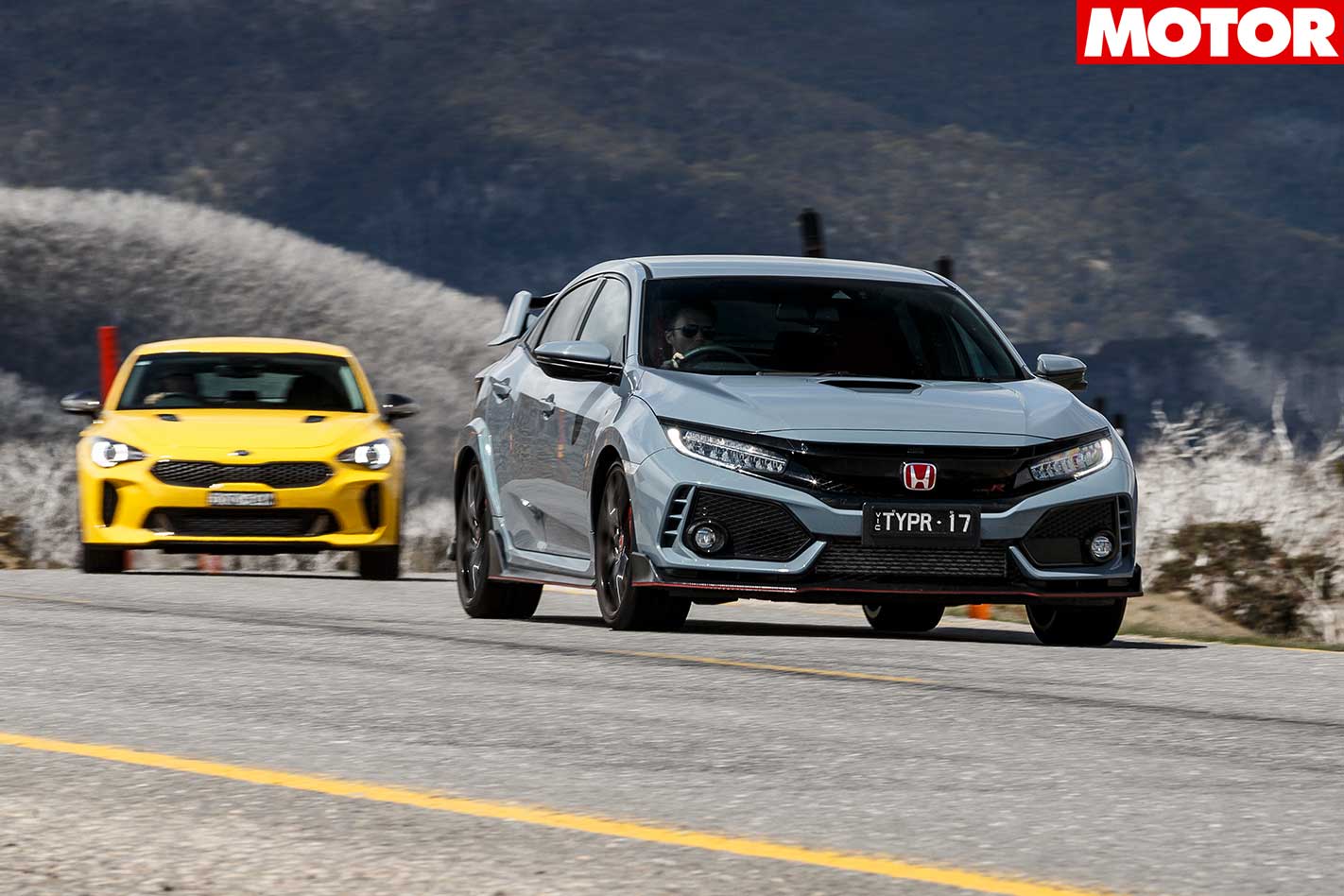
Driving the TT RS, I’m unable to gap Robbo in the Civic uphill or down, despite the Audi’s obvious power advantage. Even more impressively, this cornering prowess doesn’t come at the expense of ride.

It begs the question: is the Civic Type R the best car here?
THE ROUTE

THE GAS GUZZLERS

| u00a0 | Vehicle | Claimed | Measured | Difference |
| 1st | Honda Civic Type R | 7.7L/100km | 15.1l/100KM | +7.4L |
| 2nd | Audi TT RS | 8.4L/100km | 15.8L/100km | +7.4L |
| 3rd | Kia Stinger 330 Si | 10.3L/100km | 17.7L/100km | +7.4L |
| 4th | Porsche 718 Cayman S | 8.1L/100km | 16.8L/100km | +8.7L |
| 5th | HSV GTSR W1 | 16.5L/100km | 25.2L/100km | +8.7L |
| 6th | BMW M4 CS | 8.4L/100km | 18.0L/100km | +9.6L |
| 7th | Alfa Romeo Giulia QV | 8.2L/100km | 19.9L/100km | +11.7L |
| 8th | Lexus LC500 | 11.6L/100km | 23.3L/100km | +12.1L |
| 9th | Nissan GT-R Nismo | 11.7L/100km | 24.4L/100km | +12.7L |
| 10th | Mercedes-AMG E63 S | 9.3L/100km | 23.4L/100km | +14.1L |


